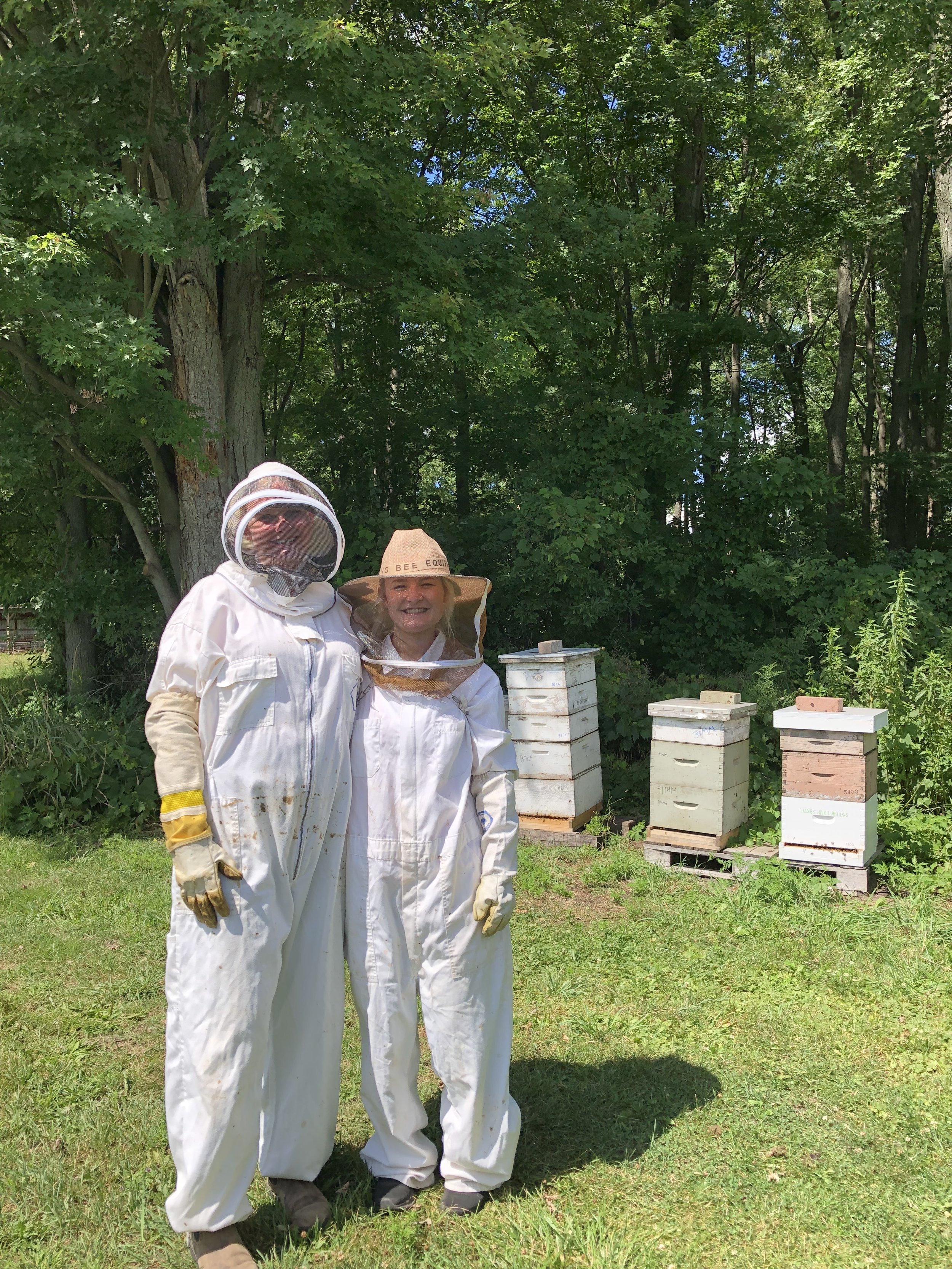Honeybees for Sale
We’ve been breeding strong, healthy, high quality honeybees for overwintering survival, gentleness, and honey production for three years now. We’re excited to be able to offer them for sale again!
Our beekeeping operation is inspected by OMAFRA. Each nucleus colony comes with a mated queen and four drawn frames of bees (two brood, two food). They’re packaged in corrugated plastic and will be sealed for transport upon your arrival. Available for pickup in the first week of June.
$250 cash on pick-up. Contact Nathan via the below form for more details!
Beekeeping
Our beehives
At Thames River Farms, we have a total of 150 beehives in various locations across the farm. Each hive contains tens of thousands of honeybees. The hives we keep are in white boxes. Within the hives, there is one queen bee who is marked by the beekeeper based on the year she was born. Marking the queen bees helps the beekeepers identify the queen quickly and allows for more precise recordkeeping. There are also male drone bees for reproduction with the queen bee and female bees who make the honey. The female bees who make the honey are called worker bees!
Did you know that honeybees communicate with each other by bumping into each other, by smell, and even by dancing?
In a beehive, you will also see bee brood, which refers to bee eggs, larvae, and pupae. Bees go through these stages before they become adult bees.
Pollination
Pollination is how plants reproduce. In plants, this means making flowers, fruits, and vegetables. The worker bees go into the flowers to collect nectar and while they are in there a little bit of pollen sticks to the hairs on their body. This pollen is transferred to the next flower they visit and fertilizes the seeds. The fertilized seeds produce what is called a fruit, but it just means the part of the plant we typically eat — fruit or vegetable. Our bees pollinate our melons!
Bees are not the only way that this fertilization can happen. Wind, small mammals, birds, and other insects can also help transfer the pollen from plant to plant. However, bee pollination is one of the most reliable and consistent forms of pollination.
Making honey
Bees bring pollen back to the hive with them that they can eat. They also make honey using the nectar! The worker bees take melon nectar back to the hive in their stomachs. The bees have enzymes in their stomachs that begin the change from nectar to honey. The bees store the nectar and honey in a box we call a super. Each super contains lots of hexagon-shaped honeycomb cells in a frame. The bees put the nectar in a honeycomb cell and fan their wings over the nectar to remove moisture and make honey. They put a wax cap on the cell once the honey is made. Larger boxes are called deeps, which are where you can find the brood, the queen, and the rest of the bees.
Honey harvesting
The honey from our farm is harvested once a year. First, the bees are removed from the supers using a leaf blower. Then, the wax caps are scraped off of each side of the frames. The frames are spun in a machine to separate the honey from the honeycombs. Next, the honey is filtered to remove any remaining wax or particles. We then put our honey into jars to be sold. Our honey is unpasteurized, which is safe to consume and may help with seasonal allergies. You can buy our melon blossom honey on the farm or online! You can buy a piece of honeycomb to eat from our farm as well. Enjoy the sweetness of honey on your oatmeal or toast, or in tea and other recipes.
Humans don’t get all the honey, though! Bees huddle together in the winter to stay warm and protect the queen bee. They eat the rest of their honey in the winter because it’s too cold for them to go outside and collect nectar.
Mites
Each day, half of the beehives on our farm are inspected for Varroa mites. These small, brown mites are parasites that can attack the honeybees. A sticky board goes under the beehive, and mites land on the board passively and when the bees groom each other. The board is inspected row by row and the number of mites is counted and monitored. If there are too many mites inside the beehive, the hive must be treated. Mite strips are placed in the middle of the hives that kill the mites but don’t harm the bees.
Safety
When beekeeping, we make sure to keep ourselves safe. One way we do this is by wearing white beekeeping suits with a veil around our heads to see! We also use a smoker, which stops the bees from telling each other that they should sting us but does not harm the bees.
Pictured are 2022 Dietetic Internship Amy Campbell (left) and Rae Wilcox (right).
This blog post was created by Dietetic Interns Amy Campbell, Rae Wilcox, Emma Belanger, and Hannah McGraw. It was reviewed and edited by our beekeeper Dr. Nathan TeBokkel.


